Suwa Taisha Shrine,
one of Japan’s oldest shrines
Suwa Taisha consists of two pairs of shrines: to the south of Lake Suwa lies Kamisha (upper shrines), made up of Honmiya Shrine and Maemiya Shrine, while to the north of Lake Suwa sits Shimosha (lower shrines), made up of Harumiya Shrine and Akimiya Shrine. Suwa Taisha also serves as the main shrines for the Suwa Shrine System that is made up of over 10,000 shrines throughout Japan. Takeminakata no Kami, the second child god of Okuninushi no Mikoto (who is worshipped at Izumo Taisha), and his consort Yasakatome no Kami are worshipped here. At Shimosha, Yae Kotoshironushi, an elder brother god of Takeminakata no Kami, is also worshipped.
Takeminakata, also known as Suwa Myojin, Osuwa-sama, or Suwa Daimyojin, commanded the winds and waters, and so worshipped as a god of the harvest long ago. In the middle ages, Takeminakata no Kami was considered a god of bravery and warfare, thus earning him reverence from the likes of military commanders such as Shingen Takeda, and Ieyasu Tokugawa.
Today the god is revered as the guardian of the source of life and livelihood, though he is said to possess unlimited divine virtues.
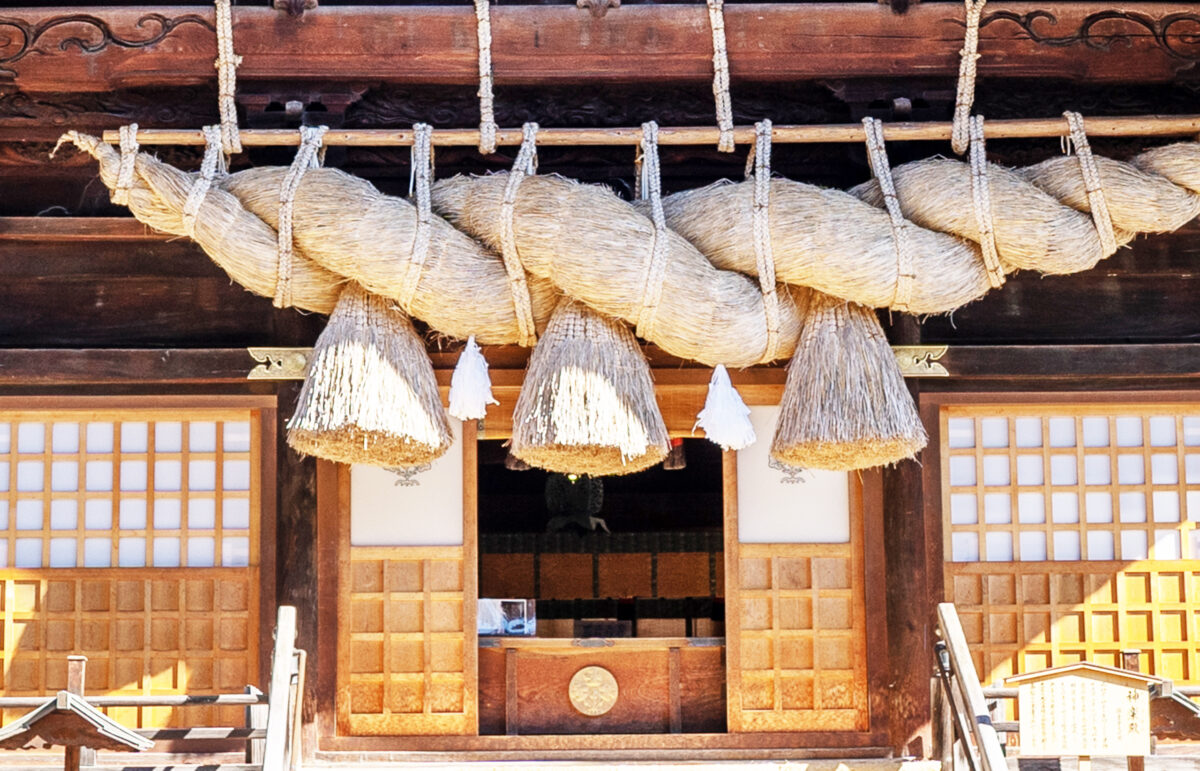
The oldest historical record of Suwa Taisha appears in an article of the country’s oldest historiography Nihon Shoki, which says Emperor Jito dispatched an imperial messenger to the shrine in 692. A rough outline of the reason for Takeminakata no Kami’s enshrinement at Suwa is listed in the Kojiki, the oldest collection of Japanese folktales. According to the Kojiki, Takeminakata no Kami opposed Okuninushi no Mikoto’s decision to offer the earth up to Amaterasu Oomikami (the sun goddess and chief deity in Japanese mythology). Takeminakata no Kami challenged Takemikazuchi no Kami, whom Amaterasu Oomikami sent to him, to a test of strength and was defeated, leading him to eventually settle in this region.
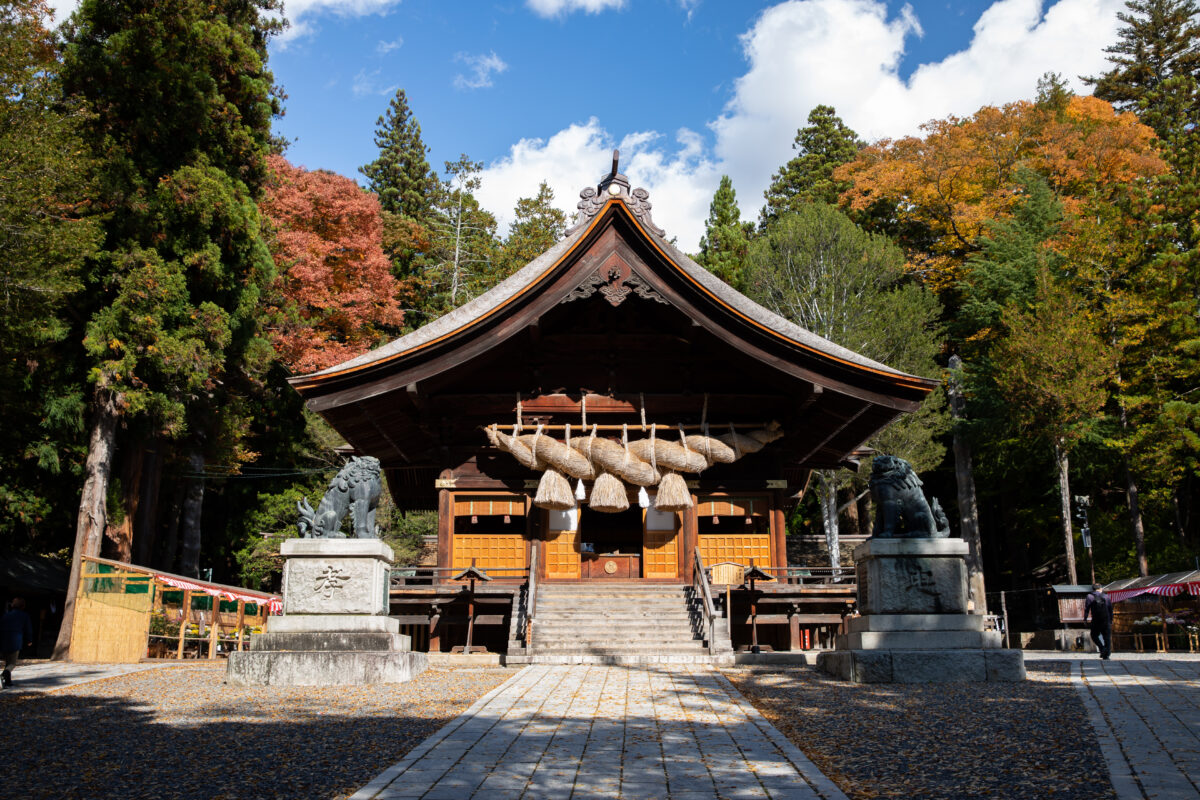
Furthermore, in a similar fashion to many older shrines, Suwa Taisha does not have a honden (a main sanctuary.) Instead, an ancient cedar tree at Harumiya and an ancient yew tree at Akimiya are worshipped as sacred trees. In this way, nature worship (where natural things and phenomena were deified and worshipped in ancient times) has been preserved at the shrine and this shows how the origin of the shrine is old.
Suwa Taisha Shimosha
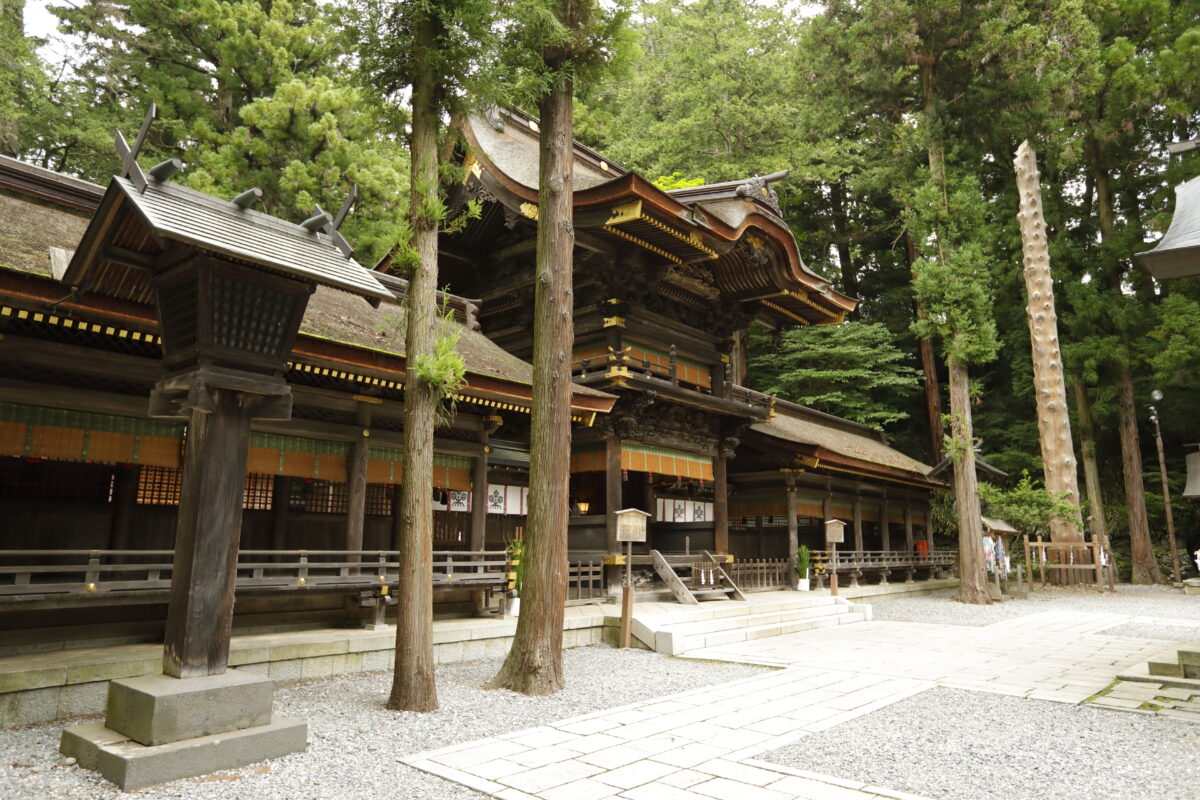
Shimosuwa is home to two shrines of Shimosha: Harumiya (the spring shrine) and Akimiya (the autumn shrine). Of these, it is said that Harumiya was the first to be enshrined.
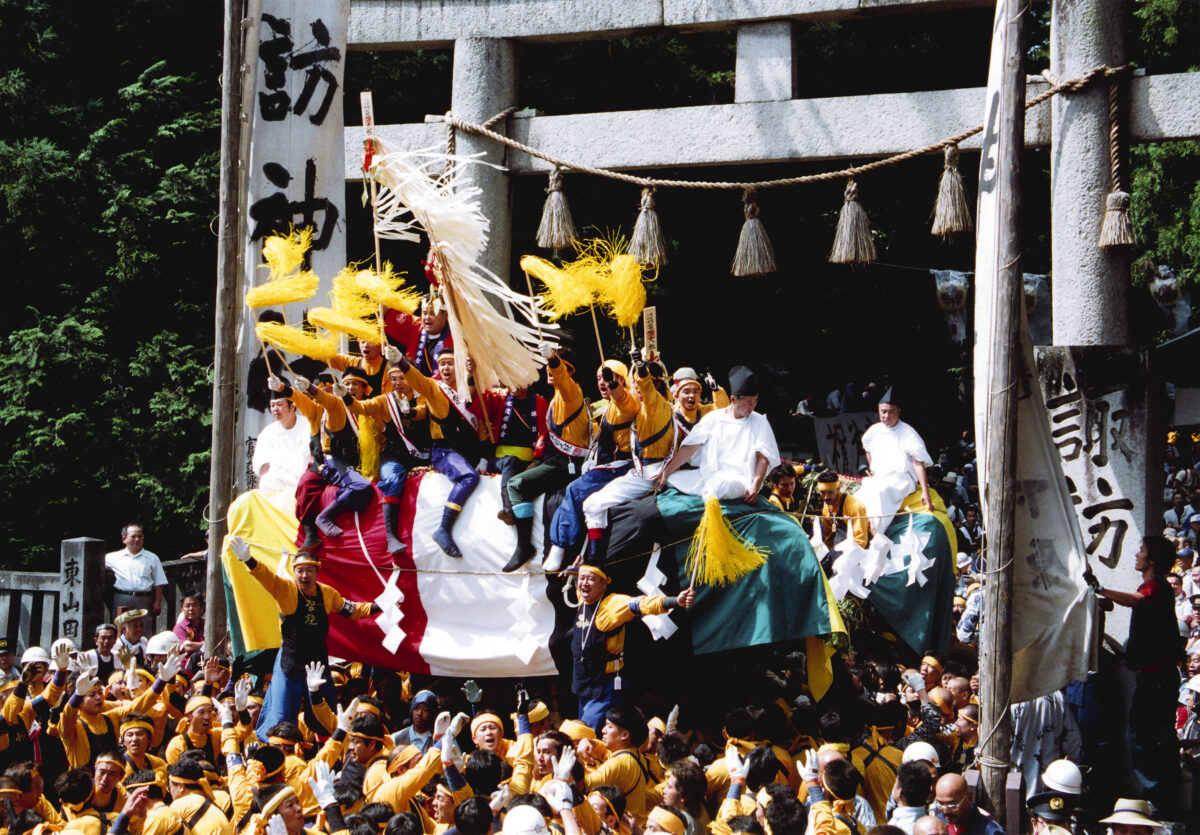 Ofune Matsuri taking place on August 1st
Ofune Matsuri taking place on August 1st
A Shinto ritual to transfer the god is held every six months. On August 1, the god is carried from Harumiya to Akimiya, while on February 1, the god is carried from Akimiya to Harumiya. Such rituals are extremely rare even within Japan, and the August festival known as Ofune Matsuri where a procession of long-used portable shrines is paraded around town is particularly lively. On the day of the festival, Shibafune, a massive boat 10 meters in length and nearly 5 tons in weight, is pulled around via rope by the townspeople in an excitingly energetic display.
It is said the god Takeminakata no Kami has been enshrined in Kamisha and the goddess Yasakatome no Kami in Shimosha since ancient times. This may be related to a legend claiming that the famed miwatari phenomenon (wherein a mountain range-like pattern of ice forms on the frozen surface of Lake Suwa) is the path taken by Kamisha’s god to cross the lake to Shimosha and visit the goddess. Take a look at The Seven Mysteries of Suwa Taisha Shimosha for more information.
Suwa Taisha Shimosha Harumiya Shrine
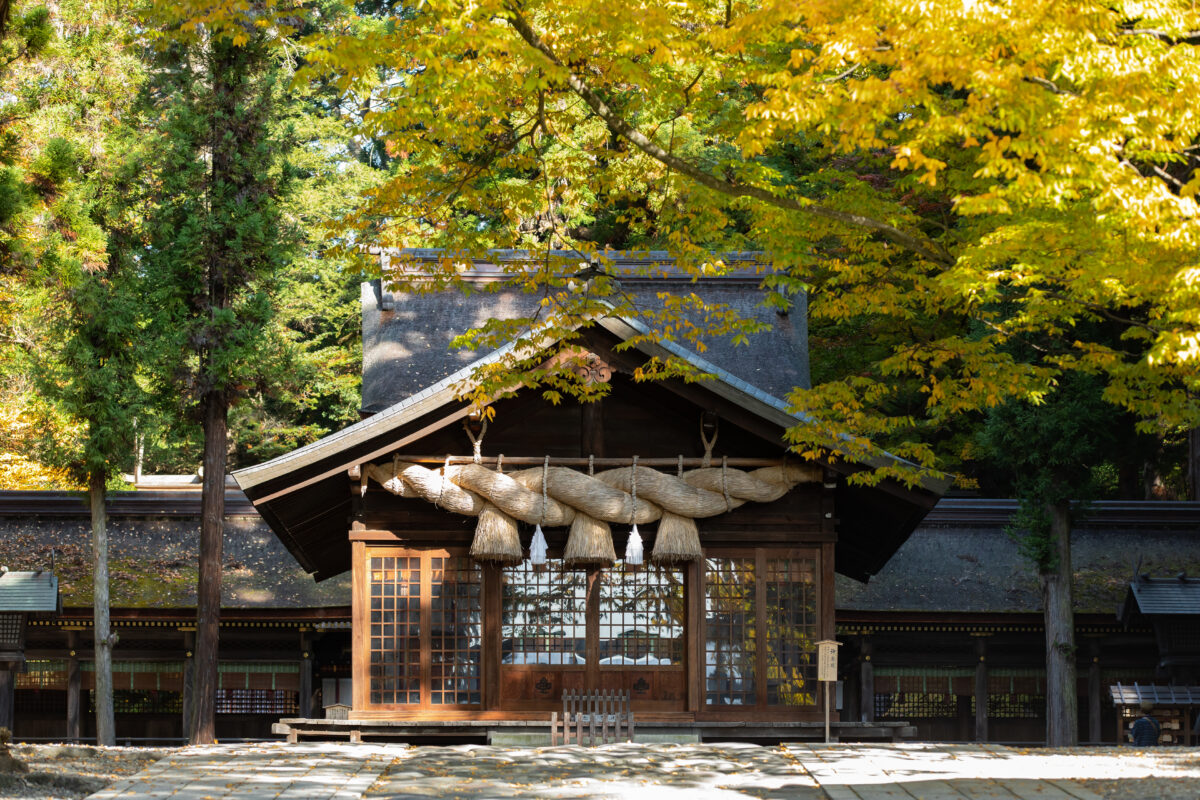
Harumiya was the first enshrinement location at Shimosha, and the heihaiden and katahaiden halls of worship are designated as important cultural properties.
During the planning phase of the shrines’ reconstruction, the Takashima Domain used the same design for both Harumiya and Akimiya. While the two shrines were constructed in tandem and with essentially the same architecture, they were built by two different schools of shrine architects in the Suwa region: the local shrine architect Chozaemon Shibamiya of Osumi school (dedicated group of architects for the Takashima Domain) and the Tatekawa school who studied Edo (modern day Tokyo) shrine architects. These schools competed via the carvings and engravings found at the shrines.
One of Harumiya’s defining characteristics is its Tsutsugayuden. Here, a Shinto ritual called Tsutsugayu Shinji is held every year from the evening of January 14 to the following morning. The purpose of the Tsutsugayu Shinji ritual is to divine the year’s harvest. Of the four shrines that comprise Suwa Taisha, this building can only be found at Harumiya.
South of Harumiya is the long, straight Daimon street. Many samurai used to compete in archery competitions on horseback upon this very road. The massive stone gate that stands at the entryway to the premises of Harumiya is said to have been constructed in 1656 by the same person who carved the nearby Manji no Sekibutsu stone Buddha.
Ukishima
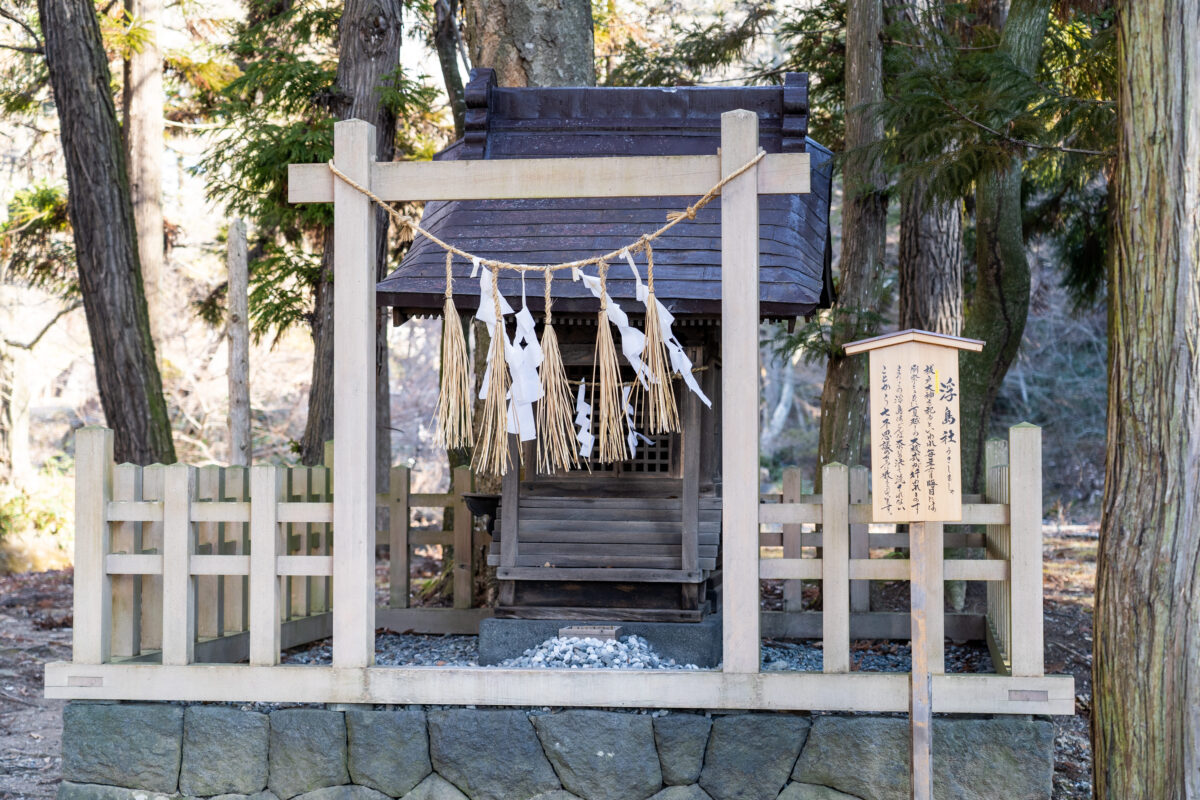
To the west of Harumiya Shrine flows a wonderfully clear river called the Togawa River. In the middle of this river sits Ukishima (the name of the small island) that has never been washed away by any amount of water, no matter how great. For this reason, the island is considered one of the seven mysteries of Shimosha.
Geba-bashi Bridge
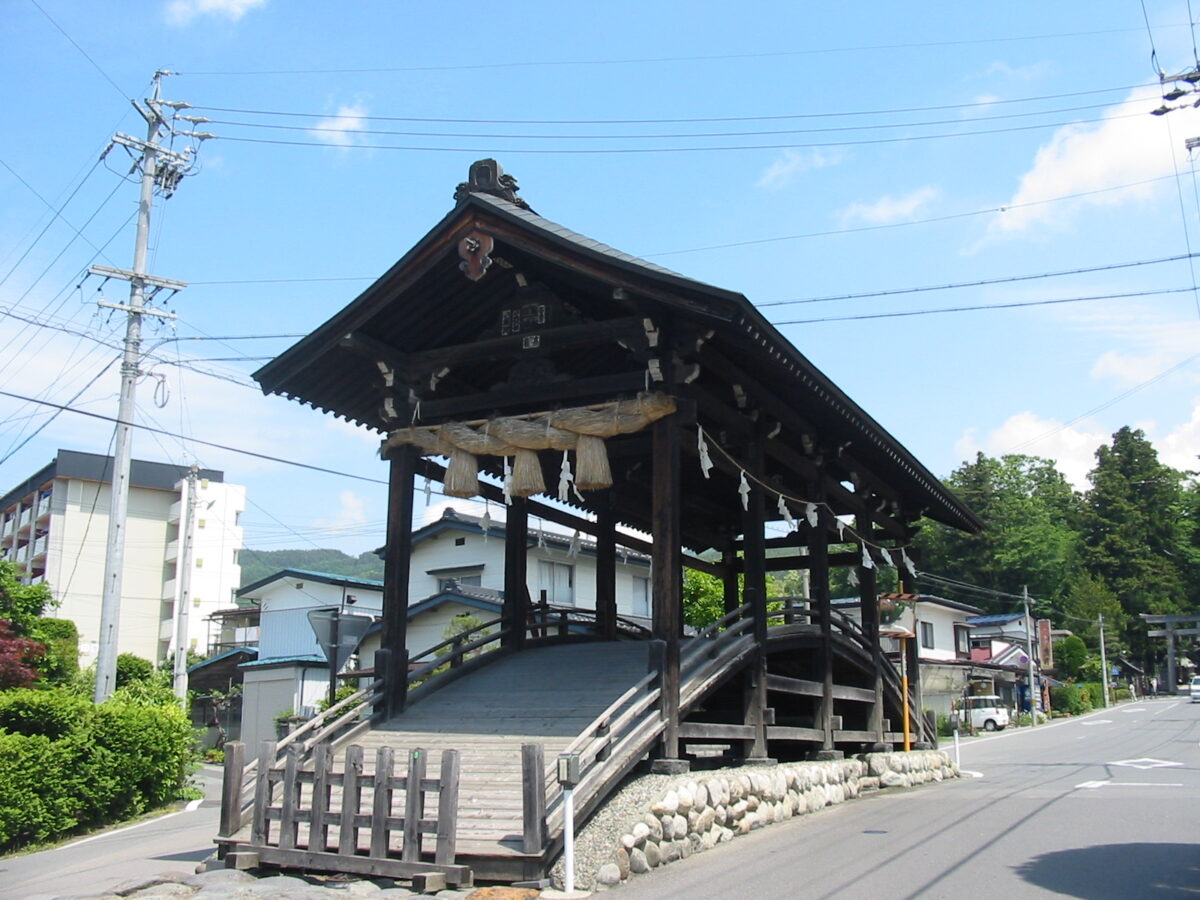
Geba-bashi Bridge is the oldest architecture in Shimosha, constructed in the Muromachi Period. Twice a year the relocation of the god is carried out here by carrying the god in an omikoshi, or portable shrine, during the Senzasai and Ofune Matsuri. Even those of the most noble stature would dismount from their horse or carriage in front of this bridge to make their approach to the shrine.
Suwa Taisha Shimosha Akimiya
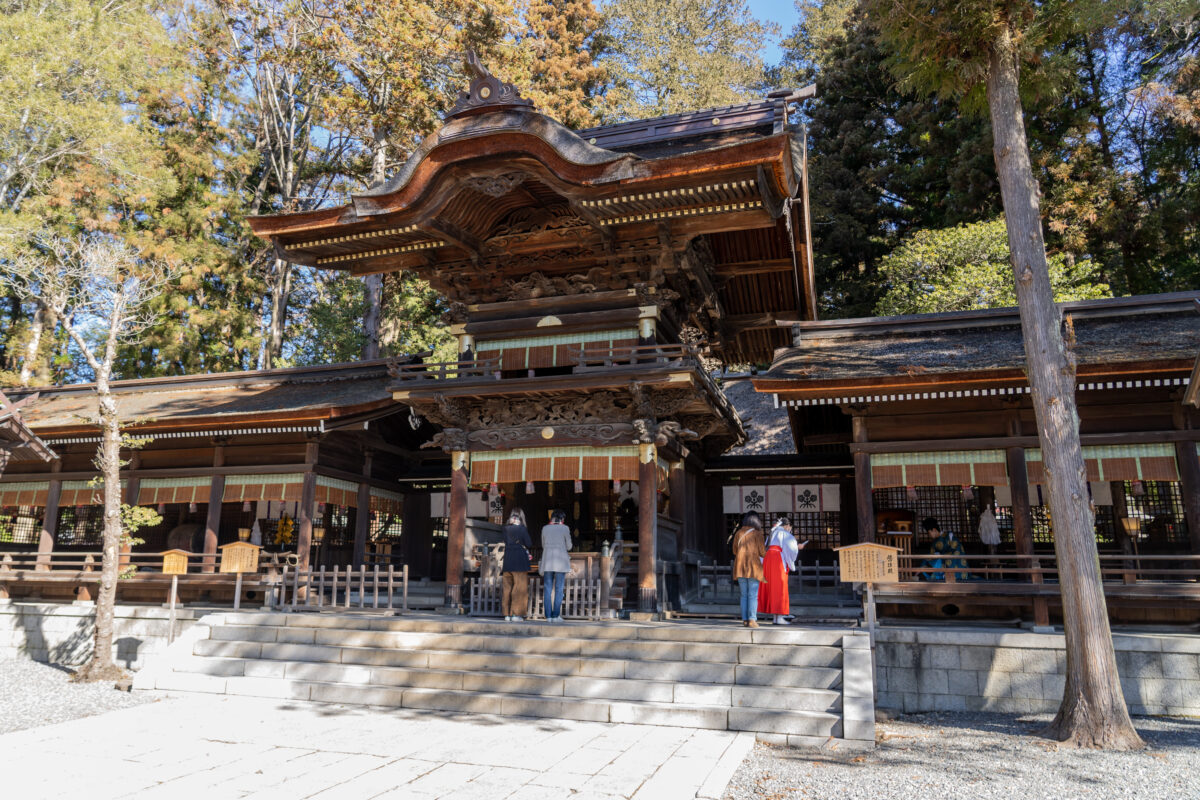
Suwa Taisha Shimosha Akimiya Shrine is a key point of transportation, located at the junction of the former Nakasendo Highway and Koshu Kaido Highway. It is also located close to the heart of Shimosuwa, which was the only post town along the entire Nakasendo Highway that boasted hot springs. A hot spring flows out at a water ablution pavilion within the premises of the shrine.
The fantastic carvings of the Heihaiden were made by Washiro Tomimune Tatekawa, a master architect of the middle of the Edo Period. Inside, his masterpiece “bamboo and crane” can also be found. Other attractions include the kaguraden which is gabled in three directions and decorated with a large shimenawa (a holy rope of sorts), the 800-year-old Neiri no Sugi cedar tree, and the komainu guardian dog which is the largest bronze dog in Japan. The heihaiden and kaguraden are both designated as important cultural properties.
Suwa Taisha Shimosha Homotsuden
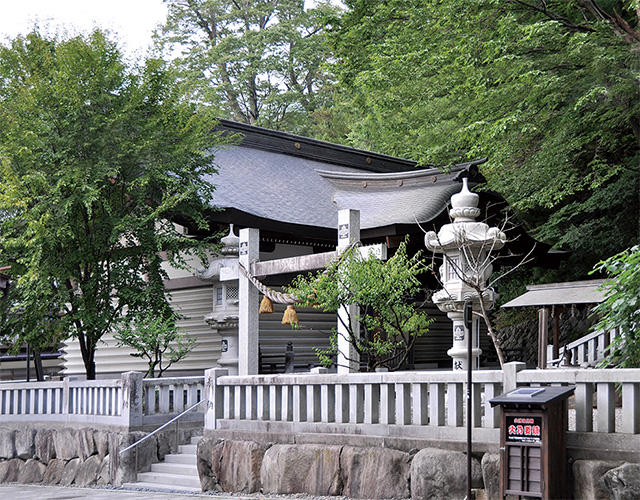
Megami no Horinoin, an important cultural property, is said to have been made in the Heian Period (794-1195), along with a collection of items dedicated by Shingen Takeda and Tadateru Matsudaira, are on display here. The materials are vital to Shimosha.
Hours: 9 a.m. – 5 p.m.
Open year-round
Admission:
Elementary and middle school students: JPY 300
High school students and adults: JPY 500
Shimosuwa Sightseeing Guide
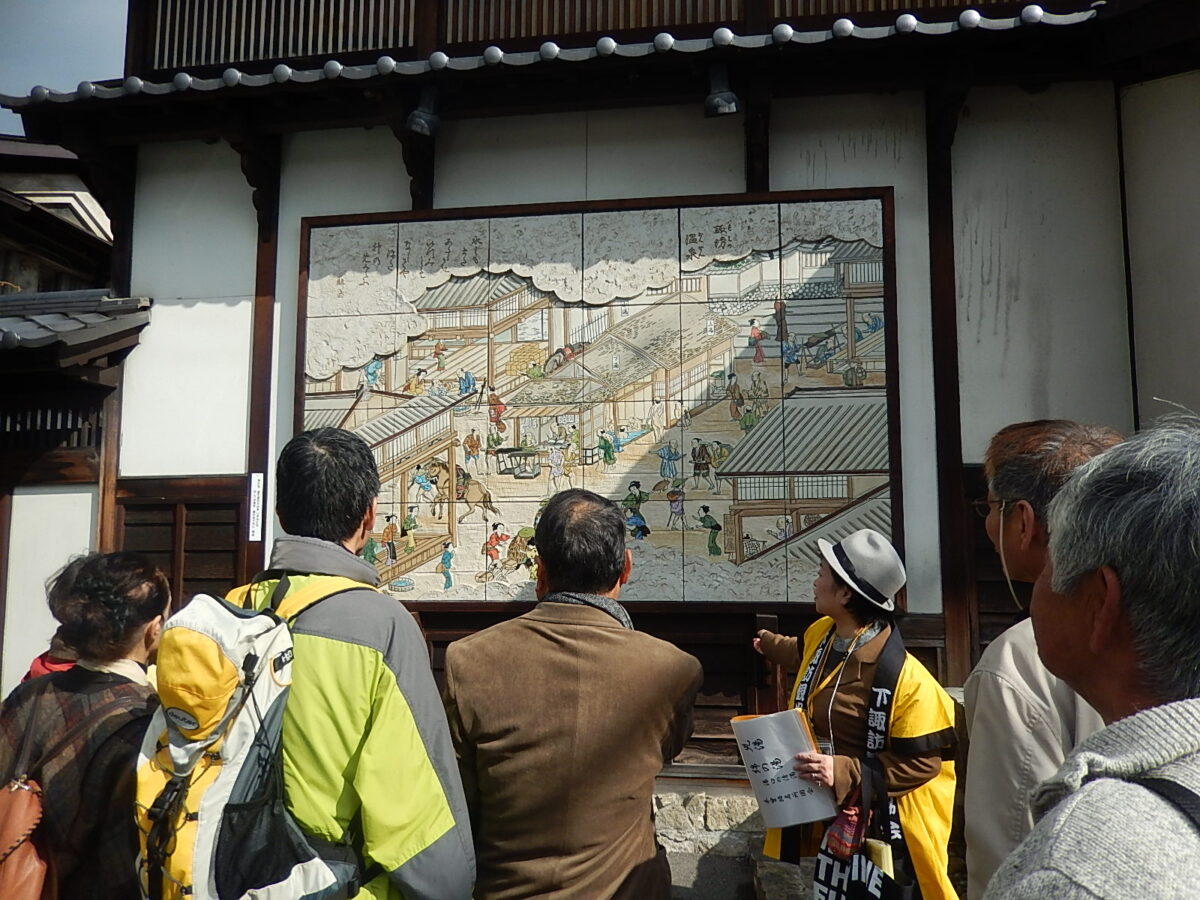
Shimosuwa offers sightseeing guides of the town for visitors to enjoy the rich history and culture found here.
Advance reservation required three days prior to the day.
For more details, please contact here
Don’t miss this deal: Every Saturday and Sunday from early April to late November, visitors can go on a free guided tour of the Suwa Taisha Shimosha area. If you find any of the yellow-clad guides around the shrines, feel free to ask for a tour!